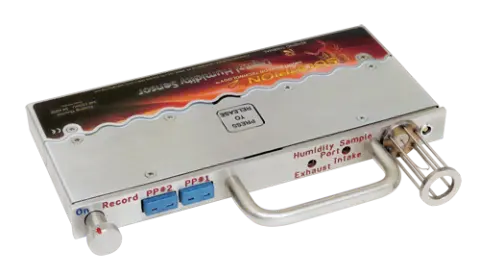Ask most baking professionals what makes great bread, and they’ll mention flour quality, oven temperature or fermentation time. But there’s a silent player working behind the scenes of every perfect loaf: humidity. While heat does the heavy lifting in any commercial baking process, moisture in the oven chamber plays a surprisingly critical role in both the rise of the dough and the formation of a satisfying, golden crust. Temperature and humidity monitoring for commercial bakery ovens in Ho Chi Minh City, Vietnam from Reading Thermal helps ensure exceptional bread production.
How Crust Development Relies on Humidity Control
Once the dough has fully expanded, moisture begins to leave the outer layers of the loaf. A dry oven chamber encourages that moisture to evaporate quickly, helping the crust form evenly and brown through the Maillard reaction. But if humidity levels remain high too long, the crust may stay pale, rubbery, or soft even after full bake time.
Achieving that signature crunch or chewiness requires precise control of both heat and humidity. Too fast a transition can cause blistering or cracking, while too slow a release results in a dull, underdeveloped exterior. Consistent humidity measurement during the baking process ensures that the switch from a moist to a dry environment happens at the ideal moment. That kind of consistency is especially important in high-volume operations, where product quality must remain identical across every batch.
Tools That Make the Invisible Visible
Because humidity can’t be seen or easily felt, it’s not always prioritized in troubleshooting bake inconsistencies. But modern profiling technology is changing that. Reading Thermal’s SCORPION® 2 Profiling System offers a Digital Humidity Sensor specifically designed to measure absolute humidity levels in commercial ovens. This sensor travels through the oven with the product, capturing real-time data on moisture conditions across every zone.
Instead of relying on indirect indicators – like crust color or guesswork based on previous batches – operators can make decisions based on precise, in-process measurements. If humidity in the initial zones is too low, steam injection can be adjusted. If moisture hangs around too long, airflow or exhaust settings can be fine-tuned. The SCORPION® 2 makes it possible to visualize the moisture curve in much the same way bakers already track temperature and heat flux.
This level of insight not only supports consistent bread quality but also helps with recipe development, maintenance planning, and energy efficiency. In facilities that produce multiple bread styles, managing the unique humidity needs of each product becomes far easier when supported by actual data.
Elevate Your Bread with Moisture Mastery
When it comes to perfecting bread production, heat may get the attention, but humidity deserves the credit. From encouraging a full rise to finishing with a flavorful, textured crust, the presence and timing of moisture in the oven can make or break your bake.
With tools like the SCORPION® 2 and its Humidity Sensor from Reading Thermal, bakeries gain the visibility they need to take control of the most subtle – but essential – ingredient in their process. Understanding humidity isn’t just a technical advantage; it’s a step toward consistent, high-quality bread every time. For more information on how we promote efficient temperature and humidity monitoring for commercial bakery ovens in Ho Chi Minh City, Vietnam, contact us online or call (01) 610-678-5890.

